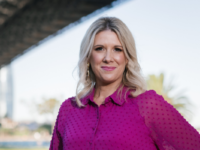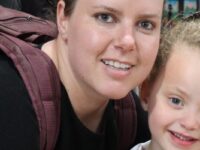Tim Dettmann is a physiotherapist and director of Kieser Australia, an expanding physio and strength-training centre brand whose average client age is 55, in contrast to 25 in the gym industry.
ISB: Please tell us what Kieser fundamentally is.
TD: If you put together a physio clinic and a strength training facility, and designed it for baby boomers by taking out the music, mirrors and intimidation, you would get Kieser.
ISB: And how did Kieser Australia came about?
TD: Our founder in Australia, Gary Harley, was looking for a health solution for those (including himself) who wanted to stay active, playing golf, tennis etc. as they got older. He saw a gap for those people who were educated enough to know the benefits, but didn’t want to go somewhere unsupervised and doing high impact activity. So when he saw an article about Werner Kieser and Kieser Training Europe, he was confident he had found the right fit. And time has proven him right. Physio clients were looking for a fully resourced clinic where they could do their rehabilitation. Gym clients were looking for more supervision and expertise. Kieser offers a solution to both of these groups.
ISB: Success in Switzerland doesn’t guarantee success in Australia – how did you adapt the model to ensure success in the Australian market?
TD: We recognised how good the Swiss model is – they’ve been successful for over 40 years and have over 140 centres. At the same time, we recognised that the market of gyms and fitness clubs was crowded and highly competitive in Australia. We decided that physiotherapy provided the perfect stepping stone approach for the Australian market – physiotherapy to help people get started with their goal of long-term better health through strength. As a result, our business is 50 per cent physiotherapy, 50 per cent long-term strength training, compared to approximately 20 per cent and 80 per cent in the German-speaking countries. This adaptation has meant we offer the same core products, only the proportions have changed.
ISB: Which channels are the focus of your marketing efforts at potential clients, and why?
TD: Our clientele are predominantly baby boomers, so a big focus for us in 2019 is Facebook. Research shows that this group is taking up Facebook quicker than anyone else and, more importantly, they are sharing the most. Probably because we work in the health industry, we have found that our clients are keen to share their stories with friends – how strength training has decreased their pain or helped them to get back to running/golf/cycling. We also find that our clients are keen to help the health of their family and friends: regularly tagging them in our posts and sharing our content. This year, since devoting a part-time resource to social media, we’ve had a 100 per cent increase in our audience and tenfold increase in our bookings from Facebook.
“In new markets, we have met the local community through education initiatives … we work really hard to be genuine and build trust.”
ISB: Do you have a different focus in attracting physios and exercise scientists, and if so, why?
TD: Having a strong relationship with our team is important to our business. When you grow from 10 team members in 2007 to nearly 250 in 2019, you have to find new ways to build your culture and maintain a community feeling. Given our team is made up predominantly of millennials and Gen Y we use Instagram to have a fun, friendly relationship with our team. As an example, if we have a professional development day we always publish it on Instagram, but rarely do on Facebook. Professional development is important to our team, who all want to grow, and we know it’s important to our next 50 team members, too, so this doubles as a branding strategy within the health industry.
ISB: Kieser centres feature both medical and strength and conditioning services – how does the patronage of the two areas change as the business becomes more established?
TD: As I said above, Australians have traditionally been reactive to their health. So, in our younger centres, physiotherapy is dominant. But as we educate the local community of the benefits of strength training for osteoporosis, diabetes, cancer recovery and cardiovascular disease amongst others we see more people training for their long-term health, so our relative proportion of physiotherapy decreases.
ISB: You recently opened your 14th Victorian centre, and will be opening your second NSW and first Qld centres this month – how does the marketing mix between medical and strength and conditioning vary between established and new markets?
TD: In new markets, like our new site at Cammeray in Sydney, we focus our message on back pain. Eighty per cent of Australians have back pain at some stage in their life and our spinal program is a unique offering in its ability to provide a strength test and then a progressive strength program for stability. In existing markets, like our newest Victorian facility in Ringwood, we expect awareness to be higher and our message is about the long-term health benefits of exercise – which is how we had 210 people who were keen to start in Ringwood before we opened.
ISB: And do you focus on different channels/platforms in established and new markets?
TD: All of our centres need to be part of the local community to have a positive influence and be successful. In new markets, we have met the local community through education initiatives. By presenting at GP clinics, sporting clubs, schools and the local Rotary or Probus groups we can build relationships in the community. And we don’t present 100 per cent about Kieser – this wouldn’t be very genuine if you are trying to make friends. We might present at a golf club about common injuries for golfers, or talk to GPs about the indications for physiotherapy for patients with back pain. This is the key in a new market, particularly in health, where low market awareness means you don’t have established trust with your local community. We work really hard to be genuine and build trust.
That doesn’t mean that this isn’t important in existing markets, but it’s slightly different when you are building trust compared to maintaining it. For our existing partners we focus on being reliable to what we have promised in that relationship.
ISB: What about word-of-mouth – is Kieser getting referrals from other branches of the healthcare industry?
TD: Our referral sources are wide and varied – the two most prominent being personal referral from our clients and from the medical profession. Within the medical and allied health sector, we are recognised for our research-based methodology and being collaborative in our approach. But it is our recognition of referrers as trusted partners, and our focus on collaboration, that has seen our referrals grow steadily over the last 10 years. Through building this trust, and standing by our values, in the last 12 months we have received referrals from over 600 medical professionals.
We are outwardly thankful for every referral we receive because we know that every time someone refers to us, they only do so because they trust us to look after their client. The same goes for our clients when they recommend us to family and friends – we always send a handwritten thank you card. In 2019 when we are increasingly busy in our digital worlds – the power of a handwritten “thank you” is amazing.
This story first appeared in issue 26 of the Inside Small Business quarterly magazine.
















